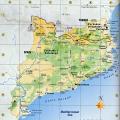Soft drink industry
Wine industry
Confectionery industry
Canning industry
Pasta industry
Oil and fat industry
Butter and cheese industry
Dairy industry
Flour and cereal industry
Meat industry
Brewing industry
Fruit and vegetable industry
Poultry industry
Fishing industry
Sugar industry
Salt industry
Alcohol industry
Tobacco industry
Bakery industry
Food industry- the largest component National economy, numbering more than forty separate industries involved in the production of food, both ready-made and semi-finished products.
The largest groups of food processing industries are:
meat, fish,
dairy (includes butter and cheese production),
flour and cereal,
food products.
The group of food industry enterprises that produce industrial goods, in turn, is divided into various industries: pasta, bakery, fruit and vegetable, alcohol, sugar, wine, liquor, salt, tea, etc.
There are two main categories of the food industry.
The first is those industries that work with imported raw materials and are focused on railway junctions, ports of import of products, large industrial centers... The products manufactured in them are highly transportable. The second category includes raw materials and consumer oriented industries.
Most of the food industry belongs to the processing industries. However, there are enterprises included in the extractive industries: this is the extraction of table salt, fish and several species of edible wild plants.
Various methods are used to process raw materials in the food industry. They are obliged to ensure the complete safety of the use of food for human health, improve their nutritional value, taste and marketability. After all, there are many food products that are not suitable for consumption in their natural form, since they contain components hazardous to human health, or are poorly absorbed. Generally accepted production technologies do not fully ensure the safety of ready-to-eat products. However, a change in technological processing can significantly improve the quality of food products, significantly extend the shelf life. When processing raw materials, the basis of the technological process is a series of sequential operations.
Processes based on bacterial and non-bacterial fermentation of food raw materials play an important role in the production of food products. The first includes fermentation that occurs during the production of wine, cheeses, beer, etc. The second includes processes that occur with the help of their own enzymes, for example, during the aging of meat. This can also include the use of artificial enzymes.
One of the main methods of processing raw materials is canning.
Recently, other methods of processing food raw materials have become widespread: sterilizing filtration (used in the production of juices, beer), tenderization (use of electric current), the use of high-frequency currents for the fastest heat treatment.
In order to improve the health of people, in economically developed countries, other food processing industries are being created that manufacture special goods.
Food industry - a set of industries whose enterprises produce mainly food products. In almost every relatively large locality there are enterprises in this industry. In some countries the food industry is a branch of international specialization, in others it meets the needs of only its population.
Industry structure food industry is complex. It includes enterprises producing food products, as well as soap and perfumery and cosmetic products.
The location of enterprises in the industry is mainly influenced by two factors: orientation to the raw material base or to the consumer.
The location of enterprises near the regions of raw material production is explained by the fact that in some industries (sugar, alcohol, canning industry), the consumption of raw materials is much higher than the mass of the finished product. In addition, such agricultural raw materials are not easily transportable.
The attraction of enterprises to areas of consumption is explained by the fact that most of the food industry produces mass products that have a limited shelf life and cannot be transported over long distances. Therefore, bakeries, confectionery and pasta factories, breweries are created in areas where products are consumed, regardless of whether there is raw material for them.
Sugar factories are located as close as possible to sugar beet or cane crop areas, as these raw materials cannot withstand long-distance transport. Tobacco as a raw material does not require on-site processing. Therefore, tobacco factories, for example Western Europe, use exclusively imported raw materials.
Cities have a particularly large influence on the location of the food industry, since their population is the main consumer of meat, milk, eggs, and bread.
The main type of food industry enterprises are factories that combine complex use raw materials with complete waste processing. There are sugar, canning, oil and fat and other factories.
For example, an oil and fat plant produces vegetable oil, solid fat, mayonnaise, margarine, soap, detergents, drying oil, glycerin, etc. from waste. Nothing is lost at meat canning plants. Even the horns and hooves of animals are used in industry, and some animal organs are valuable raw materials for the manufacture of medicines.
The food industry has made great strides in developed countries. Among them there are those who are famous for their traditions in the production of high-quality food products or are distinguished by the scale of production.
Denmark is called the "dairy farm" of Europe. Switzerland, the Netherlands, and France are known for the production of hard cheeses. High-quality canned meat is produced in many developed countries of Europe and America, fish - in Norway, Iceland, Spain and Portugal, vegetables - in Bulgaria and Hungary. The birthplace of spaghetti and pizza is Italy. Germany is famous for its sausages and beer, France and Spain for wines. Recently, new industries have developed - the production of ready-to-eat and frozen foods, various food additives.
15 .Timber industry
Timber industry- a set of industries related to the harvesting and processing of wood. One of the oldest branches of the economy.
The timber industry, like the chemical industry, has a rather complex structure. Conventionally, all branches of the forestry complex can be divided into four groups:
Logging industry - logging
· Woodworking industry - mechanical and chemical-mechanical processing and wood processing. Plate production, furniture manufacturing, production of lumber, etc.
· Pulp and paper industry - mainly chemical processing of wood, production of cellulose, cardboard and paper.
· Timber industry - production of charcoal, rosin and turpentine.
As in other branches of industry in Russia, based on the extraction of raw materials, in the timber industry a significant share of revenue is formed from the export of unprocessed raw materials - round timber. For a long time, Russia was the main supplier of wood raw materials to the countries of Europe and the Middle East, to China and Japan.
In addition to country specifics, there are general features development of the industry: an increase in the market share of substitute products and a decrease in the share of timber and paper products. For example, the advent of plastic packaging has led to a reduction in the consumption of paper, and the development of the Internet has led to a reduction in the consumption of newsprint.
In Russia, there is no private ownership of forest land, which is replaced by long-term lease of forest land for recreational and logging purposes. However, in a number of countries there is private ownership of land. For example, in the United States, forest land management is a big business worth more than $ 500 billion. Forest land in the country occupies about 500 million acres, of which 53% is owned by private owners who are not industrialists, 30% are publicly owned, 4% is owned by industrialists. and 8% are owned by financial investors.
A person has one need that always and in any conditions needs satisfaction. Whoever you are, whatever you occupy, you cannot do without good, good-quality food. It is not surprising that for a long time the food industry in one form or another has been the basis of the foundations of the economy of many countries.
Our country is no exception. It must be said that the food industry in Russia has always been quite developed, since our state has almost always been an agricultural power. The resulting raw materials had to be processed for subsequent storage or marketing, so that the corresponding sector of the national economy developed rapidly. In addition, Russia practically did not have a single peaceful century, so it was necessary to constantly take care of supplying the army with high-quality food.
A brief historical excursion
The food industry of Russia received the first blow during the First World War, and the gloomy time Civil War finally knocked her down. Compared to 1900, the production of food products has decreased by five times at once. However, by 1927 the industry had almost completely recovered to its previous level, but it was not able to satisfy the needs of the young country.
The industrialization of the state, a sharp increase in construction and the deployment of production in all corners of the USSR led to the need for a radical revision of the food industry, which existed until then. The relevance of this was the higher, the more high-quality raw materials began to produce collectivized and collective farms. Around the same years, statistical departments deduced the average figures for the needs of people of various professions in nutrients and certain categories of products.
During the Patriotic War of 1941-45, almost the entire food industry in Russia, located in central parts state, again was destroyed. The situation was saved only by the timely evacuation of most of the enterprises to the East. By the way, it is thanks to this circumstance that today Kazakhstan has an advanced food industry in that region.
It should be noted that the day of the food industry in Russia, which is celebrated on October 19, is in many ways created in memory of the heroic work of the workers in the industry, who ensured continuous food supplies to the rear and to the front.
Post-war problems
 After five years, many sectors of the national economy, including the food industry, were restored to their previous, pre-war level. But we have already said that before the industry could no longer satisfy the increased needs of a rapidly growing and developing country. In fact, the situation was even worse. The fact is that the population of the countryside was fed almost exclusively on the products that were grown in the garden. Industrial products people practically did not buy.
After five years, many sectors of the national economy, including the food industry, were restored to their previous, pre-war level. But we have already said that before the industry could no longer satisfy the increased needs of a rapidly growing and developing country. In fact, the situation was even worse. The fact is that the population of the countryside was fed almost exclusively on the products that were grown in the garden. Industrial products people practically did not buy.
During that period, the country urgently needed as many workers as possible. The natural "candidates" for their role were the peasants. But it was impossible to transport them to the cities, since in this case the number of the population that consumed food could rapidly increase. Of course, this situation could lead to hunger. There was an urgent need to reorient the industry to new standards. Invaluable assistance in this was provided by the main institutes of the food industry in Russia (Moscow, Kuban), whose specialists have developed many programs for re-equipping the industry.
Unfortunately, on the ground, the approach to solving this problem was completely wrong. Collective farmers were forbidden to keep livestock in private farmsteads, or their number was legally limited. It was assumed that in this case, labor productivity will increase greatly. Of course, to achieve this goal, production rates were constantly raised. As for crop production, in order to increase the grain harvest, the authorities decided to start plowing black soil in Kazakhstan.
It was then that it became clear that there is a chronic shortage of qualified specialists for the normal exploitation of the plowed lands. In fact, it turned out that only 40% of the total cultivated area could be used in accordance with agricultural norms. Because of the soil, it quickly fell, which, in the end, led to the need to purchase grain abroad.
Restructuring
By the beginning of the 90s, the food industry in Russia was far from being in the best condition. Due to the legendary mismanagement, the national economy was losing up to 40% of valuable raw materials. In the period from 1970 to 1986, the medical and physiological supply of many professions was constantly decreasing. In fact, only representatives of the party elite, the military, sailors, pilots and cosmonauts ate normally in this regard.
At the beginning of 1991, the needs of the population in vegetables, bread and pasta were covered by about 80-90%. As for sugar, lard, meat, milk and poultry, this figure was hardly 55-60% at best. Who is not familiar with the queues for "scarce" products, which became one of the signs of the late USSR? All institutes of the food industry in Russia in those years experienced a catastrophic shortage of personnel, the level of training of their specialists was rapidly falling.
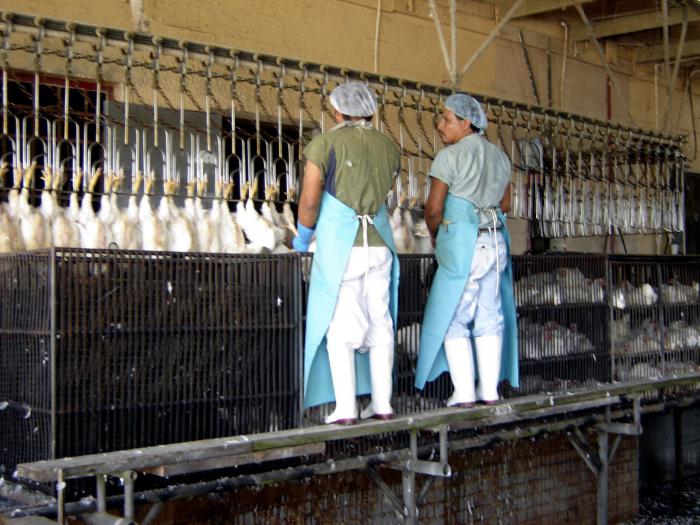 After 1991, a rapid decline in overall production began. Some sectors of the food industry reduced their output by 60%. The state of the market was rapidly deteriorating due to the fact that potential buyers simply did not have the means to buy products from domestic manufacturers. All this took place against the backdrop of a powerful flow of cheap imported goods that poured like a river across the opened borders. Every food industry in Russia in those years was simply forced to resort to unprofitable dumping, designed to maintain at least some interest of buyers in their products.
After 1991, a rapid decline in overall production began. Some sectors of the food industry reduced their output by 60%. The state of the market was rapidly deteriorating due to the fact that potential buyers simply did not have the means to buy products from domestic manufacturers. All this took place against the backdrop of a powerful flow of cheap imported goods that poured like a river across the opened borders. Every food industry in Russia in those years was simply forced to resort to unprofitable dumping, designed to maintain at least some interest of buyers in their products.
The state of the technical component of the industry
By the beginning of the 90s, everything in this area was very sad. Physically, much of the equipment was already half outdated, and as for the moral "wear and tear", it was completely out-of-the-box. The growing technological backwardness and financial instability of the economy further exacerbated the already far from brilliant position of the domestic food industry.
As a result Russian production turned out to be unable to provide its own population with food. The situation was all the more serious, the more often the authorities of the sanitary and epidemiological services discovered a complete non-compliance of many imported goods with even the most basic standards. Legs with salmonellosis are far from the worst thing that was found then. Naturally, the food industry itself received raw materials of this quality. 2014 is a much better year in this regard, our sanitary and epidemiological control bodies are working much more intensively.
Components of the food industry in Russia
One of the main pillars of this industry in our country (and throughout the world) is animal husbandry. We will discuss it now. This branch of the national economy provides at least 60% of valuable raw materials from which domestic food products are produced. Alas, there are few regions in Russia where nature allows to breed beef cattle. One of them is the Caucasus. The social situation there is such that the restoration of the industry (relative) became possible only in last years.
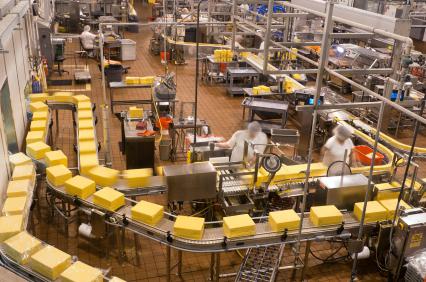 Accordingly, all recently, at least 60% of the country's population's need for the same beef has been covered exclusively by imports, due to which the food industry in Russia suffers. 2014 was marked by the imposition of Western sanctions. Oddly enough, but it is the last circumstance that allows us to hope for the prudence of the authorities, which, perhaps, will nevertheless pay attention to their own producers.
Accordingly, all recently, at least 60% of the country's population's need for the same beef has been covered exclusively by imports, due to which the food industry in Russia suffers. 2014 was marked by the imposition of Western sanctions. Oddly enough, but it is the last circumstance that allows us to hope for the prudence of the authorities, which, perhaps, will nevertheless pay attention to their own producers.
Cattle breeding
In our country, it is developed in two directions: meat and dairy and dairy cattle breeding. It is developed only in places where the climate and food supply make the production quite profitable.
Domestic dairy products in recent years differ enough high quality... The problem is the small amount of subsidies that the state directs to support the industry. Theoretically, this is due to the entry of our country into the WTO, but this fact does not prevent Germany and France from supporting their own farmers. Today, a paradoxical situation has developed: despite the fact that the country is able to provide at least 89% of its demand for dairy products on its own, we continue to buy them abroad.
Because of this, the food industry in Russia suffers greatly. The report of industry experts over the past year shows that the country is able to achieve fully independent milk supply in five to seven years. Instead, domestic producers are again left without government orders and funding.
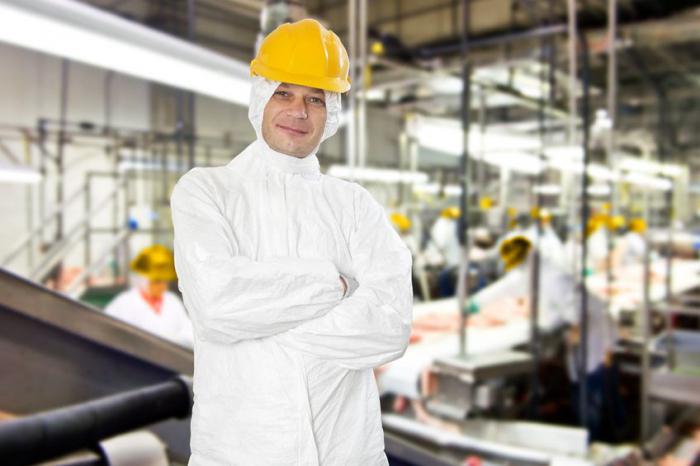 With regard to beef, the situation is even worse here. The fact is that in our country there is practically no dairy farming as such. All meat of domestic origin that appears on the shelves of our stores is from dairy cattle. It has such low nutritional characteristics that in the food industry it is used exclusively as an additive to pork. It is impossible to organize the production of full-fledged steaks or sausages from it, and in fact these products could contribute to a significant increase in the income of Russian food manufacturers.
With regard to beef, the situation is even worse here. The fact is that in our country there is practically no dairy farming as such. All meat of domestic origin that appears on the shelves of our stores is from dairy cattle. It has such low nutritional characteristics that in the food industry it is used exclusively as an additive to pork. It is impossible to organize the production of full-fledged steaks or sausages from it, and in fact these products could contribute to a significant increase in the income of Russian food manufacturers.
Pig breeding
Based on the foregoing, it can be concluded that at least 2/3 of the total demand for raw meat is covered by pig breeding. Domestic products made from it are of excellent quality and are always in high demand among consumers. The problem is that pork is a rather expensive product, since it requires large subsidies for the construction of large pig-breeding complexes. The realities are such that the state is in no hurry to invest in them, preferring to finance foreign manufacturers. Russia's own food and processing industry at this time is experiencing a chronic lack of funds.
Branches of the food industry in Russia
Now let's look at the main branches of the food industry in Russia. The principle of locating processing enterprises on the territory of the country is based on two factors at once: raw materials and consumer. In most cases, when building new enterprises, they are guided precisely by the availability of raw materials, since it is food products it takes a lot. When transporting more or less long distances, huge costs are required to ensure its safety, and therefore production in such conditions becomes simply unprofitable.
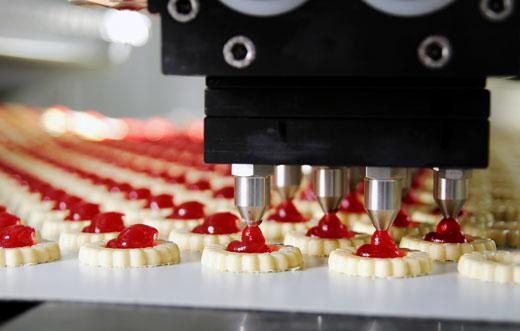 Depending on the combination of all these factors, experts distinguish three branches of the food industry that are common in Russia:
Depending on the combination of all these factors, experts distinguish three branches of the food industry that are common in Russia:
- The production of milk, starch and molasses, sugar and vegetable oil, vegetable canned food gravitates to the sources of raw materials. For example, we have only in the Caucasian and Central Black Earth regions, since it is simply unprofitable and stupid to transport somewhere hundreds of thousands of tons of raw materials, from which only a few tens of tons of finished products come out. The largest enterprises of the food industry in Russia (ASTON, "Yug Rusi"), which produce vegetable oil, are also located there.
- On the contrary, the production of the bakery industry can be found throughout the country. This allows us to refer it to the consumer food industry. Grain is relatively easy to transport, the yield of finished products from raw materials is quite large.
- Mixed industries: flour and meat. The primary processing of raw materials is carried out in the immediate vicinity of the places of its production, and then the semi-finished products are sent to the places of their final processing. A perfect example is fish. It is frozen on fishing trawlers. Salted herring, for example, is produced even in Udmurtia, from which the nearest sea is not one thousand kilometers away.
Other industry characteristics
In general, the domestic food industry includes hundreds of highly complex production cycles. The most important are the basic varieties. Their products are the primary raw material for more complex industries. These industries include: the flour-grinding industry, the production of raw sugar, the production of milk with its subsequent cooling.
All enterprises of the food industry in Russia, specializing in the production of fish or the slaughter of livestock, can also be ranked among them. But here we already have to make distinctions between industries: the same beef can be immediately sent to store shelves, or it can be used for the production of sausages, meat bread, etc. It is the latter processes that are considered the most important, since the resulting products bring the lion's share profit to the manufacturer.
Important production features
The food industry in our country alone meets the needs of millions of consumers. This is due to the huge variety of companies, some of which have been on the market for over a hundred years (Nestle, for example). The peculiarity of this industry is that it is necessary to constantly find some new tastes and forms of production, since the interest of consumers needs to be maintained. It is for the latter reason that the modern food industry is interested in the invention of new containers and methods for their design.
Simply put, the food industry, not only in our country, but also abroad, employs thousands of people involved in the production of glass, paper, plastic and metal packaging. This is largely due to the raw material nature of the location of industry enterprises: the same beer is best bottled in the immediate vicinity of factories where plastic and glass bottles are produced. Carrying them across half the country is costly.
The main costs of the food industry
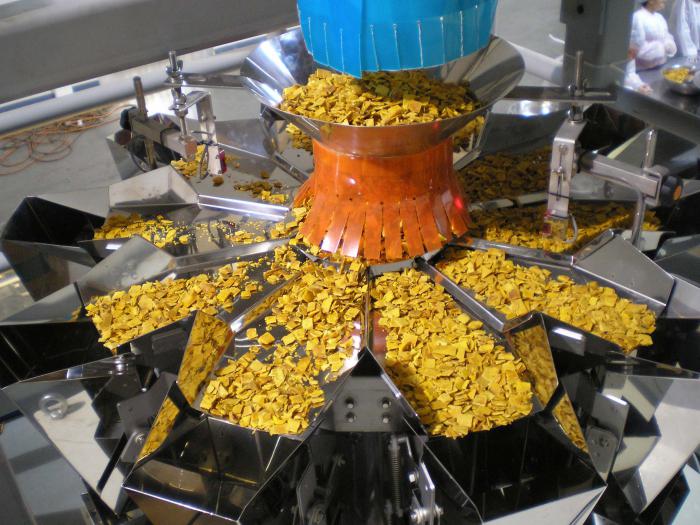 If we talk about the profitability of this kind of production, then Russian food industry enterprises bear considerable costs due to the need to purchase modern filling lines and machines, the prices of which are not particularly democratic. The expenses for professional printing design of packages are very high. Add to that payments to designers, marketers, certification and promotion costs. Thus, the modern food industry is a very, very costly industry.
If we talk about the profitability of this kind of production, then Russian food industry enterprises bear considerable costs due to the need to purchase modern filling lines and machines, the prices of which are not particularly democratic. The expenses for professional printing design of packages are very high. Add to that payments to designers, marketers, certification and promotion costs. Thus, the modern food industry is a very, very costly industry.
The main problems of the food industry in our country
In general, we have already spoken about many of them. Thus, the development of the food industry in Russia is greatly complicated due to the almost complete absence of state support for the industry. There are a lot of costs for setting up production (see above), taxes - even more, and there is no real interest of the top officials of the state in ensuring the country's own self-sufficiency.
Do not forget that there are several major players in the industry that control the food market almost all over the world. Everyone knows these companies: Nestlé, Coca-Cola, Unilever and others. Thus, almost all carbonated water is produced at factories whose shares belong to Coca-Cola. The same is the case with chocolate: even buying domestic sweets, you sponsor the Swiss Nestlé.
Of course, these companies in the Russian food industry are profitable in a certain sense, since they pay considerable taxes to the federal budget. The other side of the coin is that the domestic production of carbonated water alone is almost completely killed, since it is simply unrealistic for small companies to compete with such "whales" of the global industry. These are the main problems of the food industry in Russia.
Main purpose Food Industry - food production. Its development makes it possible to eliminate the differences in food supply to the population associated with unequal natural conditions districts. Food concentrates, canned food, frozen vegetables and fruits do not deteriorate during transportation and long-term storage. The food industry is closely related to agriculture. By the nature of the raw materials used, the industries that make up it are divided into two groups.
V first group includes industries that use unprocessed raw materials: cereals; butter making; sugar; tea room; canning; fish.
To the second group includes such industries using processed raw materials as: tea packing; confectionery; bakery; pasta.
The food industry is found almost everywhere where people live. This is facilitated by the widespread use of raw materials and the widespread consumption of food. Nevertheless, there are certain patterns in the location of the food industry.
Placement of food industry enterprises based on their specific features.
Enterprises producing perishable and non-transportable products are placed in the regions of their consumption.
Enterprises processing non-transportable raw materials that cannot withstand long-term storage are placed in the production zones of these raw materials (canning, dairy, wine, fish and other industries).
In the areas of raw material bases, enterprises are also located, which are distinguished by a special raw material intensity of production. These include sugar factories, butter mills.
Food industry
Food industry
a set of industries that produce food. Includes dairy, meat, fish, butter, butter, flour, bakery, sugar, confectionery, canning and other industries. It is closely related to agriculture and fishing, since it receives raw materials from these industries (milk, meat, fish, seafood, vegetables, fruits), part agro-industrial complex... Some food industry enterprises operate on imported raw materials and are not directly related to the raw material base; the products they produce do not require immediate consumption and are highly transportable. These are confectionery factories, meat processing plants, etc. The scale of such industries is significant. Others, smaller in scale, are guided by raw materials (sugar, canning, butter-cheese factories, etc.) and are close to resource bases... Still others are consumer-oriented (bakery industry, production of semi-finished products, etc.) and are close to the places where products are sold. The modern food industry is characterized by the broadest mechanization and automation of production and transport processes, the use of artificial cold and vacuum technology, the latest physical methods (ultrasound, high-frequency heating, etc.), chemical and biological drugs to accelerate technological processes, a huge variety of new products ( e.g. baby and diet food). New methods of long-term (up to several weeks) preservation of products (bread, etc.) in airtight containers are promising. New effective, environmentally friendly chemical and biological preservatives have been found. Delivery of almost any industry product to any part of the world is possible. The food industry includes, in addition to the food industry itself, the production of non-alcoholic and alcoholic beverages (including the alcoholic beverage industry, winemaking, brewing) and tobacco products.
Geography. Modern illustrated encyclopedia. - M .: Rosman. Edited by prof. A.P. Gorkina. 2006 .
See what "food industry" is in other dictionaries:
Industry light industry, the totality of food production in finished form or in the form of semi-finished products. In system agro-industrial complex the food industry is closely related to agriculture as a supplier of raw materials and with ... ... Financial vocabulary
A set of industries that produce food products: meat, dairy, fish, flour-grinding cereals, bakery, sugar, confectionery, canning, fatty oil, etc. Big Encyclopedic Dictionary
food industry- - EN food industry The commercial production and packaging of foods that are fabricated by processing, by combining various ingredients, or both. (Source: MGH) ... ... Technical translator's guide
Packaged food in the American supermarket Fred Meyer The food industry is the totality of food production in finished or semi-finished form ... Wikipedia
A set of industries producing food products: meat, dairy, fish, flour-grinding cereals, bakery, sugar, confectionery, canning, fat and oil, etc. * * * FOOD INDUSTRY FOOD INDUSTRY, a set of industries ... encyclopedic Dictionary
I Food industry is a set of industries producing food flavors, as well as tobacco products, soap and detergents, perfumery and cosmetic products. In pre-revolutionary Russia, there were over ... Great Soviet Encyclopedia
Initially, the site was devoted to bibliography of books on the food industry, but as it turned out, this was not enough. We now have not only bibliographic catalogs for the food industry, but also a library of books.
Here you will find any information on the food industry, from articles to videos.
Our portal has a forum where you can share your opinions. The portal is developing and is now called as informational portal"Food Man".
Food industry- is the production of finished food products or semi-finished products, as well as tea, soap, tobacco products and detergents. In the agro-industrial complex, the food industry is closely connected with the supplier of raw materials - agriculture - and with trade, which sells food and semi-finished products. Part of the processing industries gravitates towards the raw material regions, the other part - towards the consumption regions.
The food industry today has about twenty two independent industries. The driving force behind the industry is the creation of new technologies. It helps to create a more perfect technical base, to correctly justify the economic processes. Experts of any services involved in ensuring the operation of an enterprise or industry should know and master the basics of technology.
Technological progress, driving forward the production processes of the food industry, is based on a huge number of research, design and engineering organizations. A huge number of specialists work in food industrial enterprises. A large number of technical intelligentsia, scientific forces of educational and research institutes, inventors and designers have grown up in the processing industry. Thanks to them, a continuous rise in the technical level of various industries is ensured.
Branches of the food industry
Canning industry
Dairy industry
Meat industry
Oil and fat industry
Pasta industry
Confectionery industry
Wine industry
Brewing and non-alcoholic beverage industry
Fishing industry
Salt industry
Sugar industry
Tobacco industry
Fruit and vegetable industry
Butter and cheese industry
Bakery industry
The importance of numerous branches of the food industry in the system of social production is determined primarily by the fact that their products are intended for the reproduction of the main productive force society - work force... The main importance of nutrition is to meet the body's need for substances that restore expended energy. The important role of the food industry lies in the fact that it facilitates domestic work; factory production of prepackaged and packaged food products is carried out, labor costs of trade workers are reduced, consumers' time for purchasing products is reduced.
By processing perishable raw materials into transportable and long-lasting products, the food industry provides an opportunity for inter-district exchange and allows to overcome the seasonality of consumption of perishable agricultural raw materials. The food industry is designed to provide special products for various contingents of the country's population (cosmonauts, divers, climbers, patients, etc.), to develop raw materials for other sectors of the national economy: alcohol, salt, starch, dextrins, vegetable oil, drying oil, glycerin, technical fats, skins of livestock, bristles, blood products, down, feathers, raw materials for medical preparations. Waste from the food industry (bagasse, stillage, grains, molasses, fishmeal, etc.) are used in agriculture as components of feed for farm animals. The food industry, in turn, is associated with other sectors of the national economy. First of all, with agriculture, since agriculture is mainly a supplier of raw materials, with mechanical engineering (provision of technological equipment), with the forestry and pulp and paper industry (provision with paper, cardboard, plywood, wood), with chemical industry(provision of glass and polymer containers, varnishes, paints) and others.
The food industry is actively cooperating with other countries. This makes it possible to enrich the range of food products within the country and ensure the sale of domestic products by exchanging the most advanced technologies and equipment.
The main goal of the food industry is to constantly meet the demand and needs of the population for high-quality products of a wide range in order to obtain a balanced diet.
An integral part of scientific and technological progress in the food industry is to improve the quality and biological value of food. Currently, our country is solving the problem of not only providing the population with food, but also creating a rational, balanced diet for all irreplaceable factors. In this, a large role is assigned to food production technologies, which allow preserving and even improving the properties of raw materials to the maximum.
Basic sciences are the foundation of modern technology. Processes of varying complexity that occur during the processing of raw materials into food are based on the laws of physics, thermal physics, chemistry, biochemistry, microbiology, mechanics, etc.



